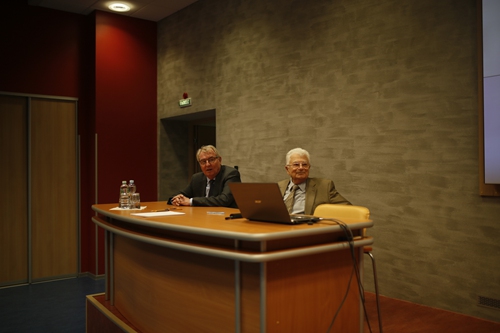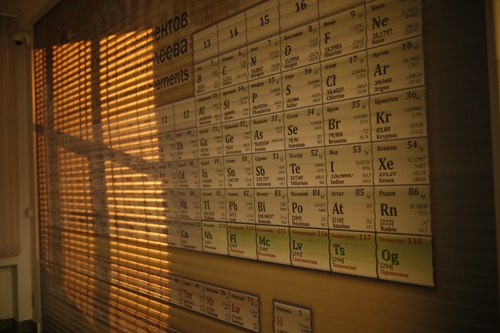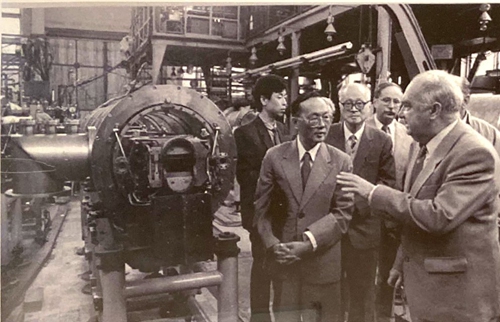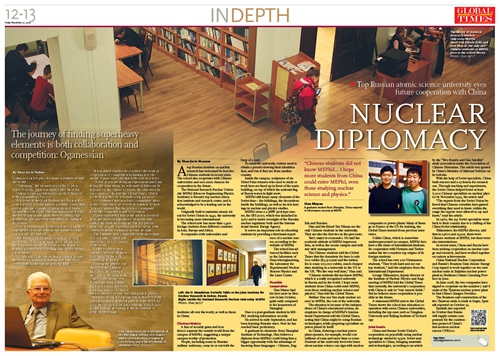HOME >> CHINA
The journey of finding superheavy elements is both collaboration and competition: Oganessian
By Shan Jie in Dubna Source:Global Times Published: 2019/11/21 19:03:40

Yuri Oganessian (right), an academician of the Russian Academy of Sciences who is also a leading scientist in researching super heavy chemical elements Photo: Shan Jie/GT
Dubna is a sacred place for many scientists around the world.
"Dubnium," the element 105 of the D. Mendeleev Periodic Table was named after the town.
Dubna is only 125 kilometers north of Moscow with a population of 50,000.
It is home to the Joint Institute for Nuclear Research (JINR), a world famous scientific center that serves a unique example of integration of fundamental theoretical and experimental research with the development and application of cutting edge technology and university education, according to its website.
Here scientists have synthesized new, long-lived superheavy elements with atomic numbers of 113, 114, 115, 116, 117 and 118.
The number 118 element, "Oganesson," was named after Yuri Oganessian, an Academician of the Russian Academy of Sciences who is also a leading scientist in researching superheavy chemical elements.
He introduced the efforts that scientists around the world are making in finding new superheavy elements to further fill the periodic table.

The D. Mendeleev Periodic Table at the Joint Institute for Nuclear Research in Dubna, Russia Photo: Shan Jie/GT
When asked whether he considers the work as cooperation or competition in finding new elements, Oganessian said that both exist in science.
"Today, if you are doing an experiment and I am doing the same thing, we will make it different. It depends on the culture or maybe the education in our countries," he told the Global Times. "But if we work together we will make a big progress."
He continued that in science community, there is also competition, as everybody wants to be first. "It is very natural that the science community looks like competition and cooperation."
Oganessian noted that in the nuclear research field, the study on superheavy elements only ranked the sixth most urgent. The top priority issues are usually regarding nuclear energy, with carbon elements coming in second, he said.
The Institute now collaborates with more than 800 scientific centers and universities in 62 countries of the world.
In the corridors near entrance, several old photos were hung on the wall, remarking its history.

Wang Ganchang, China's nuclear scientist, known as founding fathers of Chinese nuclear physics, cosmic rays and particle physics, at the Joint Institute for Nuclear Research in Dubna, Russia Photo: Joint Institute for Nuclear Research
Among the photos, one showed some Chinese faces here. According to the caption, the man in the center of the picture was Wang Ganchang, China's nuclear scientist, known as founding fathers of Chinese nuclear physics, cosmic rays and particle physics.
In 1959, Wang led a group which discovered the anti-sigma minus hyperon particle at the JINR. In 1961, the group was awarded with the JINR Prizes for the finding, according to the documents of JINR on its website.

RELATED ARTICLES: